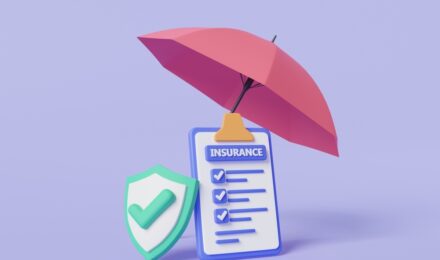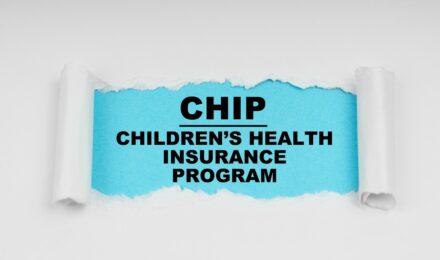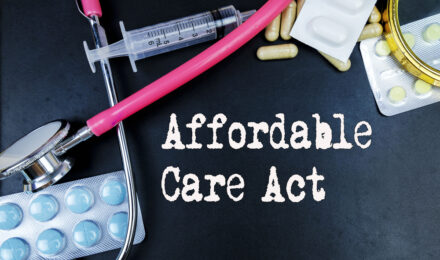Contents
The housing affordability crisis continues to strain renters nationwide. While emergency rental assistance (ERA) programs initially targeted financial hardships during the COVID-19 pandemic, they remain crucial as rental costs soar and economic recovery remains uneven. How can renters navigate this complex system and secure the help they deserve? This guide explores how individuals can access ERA programs, their eligibility criteria, and additional resources to ensure housing stability.
Understanding Emergency Rental Assistance
Emergency Rental Assistance programs were created to mitigate the devastating impact of housing insecurity during the COVID-19 pandemic. Congress allocated a staggering $46.55 billion for this purpose, offering a lifeline to renters grappling with financial instability. These funds, disbursed through two major legislative acts, address immediate housing needs while laying a foundation for long-term stability. Yet, even with billions distributed, unclaimed funds remain—a pivotal opportunity for renters who know where to look.
As of 2024, these programs are indispensable. Local agencies administer the funds, each with unique protocols and eligibility criteria. Have you checked the specifics in your area? If not, now is the time.
Key Eligibility Criteria for ERA
1. Rental Agreement Verification
To qualify for ERA, proof of a rental arrangement is required. This can be formal or informal. Acceptable documentation includes signed leases, landlord statements, or even receipts from rent payments. Flexibility exists here, so don’t let unconventional agreements deter you.
Eligibility extends to various housing situations, including houses, apartments, and mobile homes. Isn’t it reassuring to know that informal setups are considered?
2. Demonstration of Financial Hardship
Financial hardship must be proven, but the criteria are broad. Examples include job loss, sudden income dips, or overwhelming medical bills. These hardships underscore the necessity of assistance, offering a clear path for approval.
Document your struggle. A concise letter or detailed proof—like unemployment notices—can make a significant difference.
3. Income Thresholds
Income must not exceed 80% of the area median income (AMI). This threshold varies, reflecting regional cost-of-living disparities. Many agencies offer calculators or support to clarify your eligibility.
Think ahead: Have you verified AMI thresholds early in the process? It’s a simple step that saves time.
4. Proof of Housing Instability
Risk of homelessness or unsafe conditions defines housing instability. Provide eviction notices, overdue utility bills, or evidence of unsafe living environments. Such documentation vividly illustrates your precarious situation.
Even without formal eviction threats, unstable housing qualifies. Unsafe environments are valid reasons to apply. Who wouldn’t want to ensure their home is a sanctuary?
The Application Process
Gathering Required Documentation
Begin by collecting essential paperwork. Government-issued IDs, proof of income, and residency evidence are standard requirements. Hardship documentation—like medical bills or layoff notices—often tips the scales in your favor.
Stay organized. Preparation smooths the application process.
Local agencies administer ERA funds, and their processes differ. Identify your area’s program through tools like the Emergency Rental Assistance Dashboard. Alternatively, call 211 to speak directly with housing experts.
Research matters. Deadlines and requirements can vary significantly. Have you explored all your options?
Submission and Follow-Up
Submit your application meticulously. Respond promptly to agency inquiries; delays may jeopardize approval. Patience is key, as high demand often lengthens processing times.
Remember: Persistence pays off. Isn’t it worth the effort to secure your home?
Addressing Common Challenges
Limited Access to Documentation
Missing documents? Many agencies accept affidavits or landlord statements as alternatives. When in doubt, ask for guidance from caseworkers or local experts.
Adaptability ensures no door stays closed. Why let paperwork stand in your way?
Complex Income Situations
Irregular income? Recent employment changes? Supplement with bank statements or letters from employers. Transparency strengthens your case.
Communicate clearly. Your story matters.
Language and Accessibility Barriers
Language challenges or disabilities? Many programs provide translation and accessibility services. These resources ensure equal access for all applicants.
Inclusivity remains a program priority. Isn’t that reassuring?
Additional Support Options
Legal Protections Against Eviction
Eviction laws protect tenants nationwide. Free or low-cost legal aid organizations can help you understand your rights, negotiate with landlords, or represent you in court.
Explore your options. Knowledge is power. Why not equip yourself with it?
Negotiating with Landlords
Open dialogue with landlords often resolves conflicts. Mediation services can facilitate these conversations, helping you craft feasible payment plans or delay rent increases.
Stay proactive. Dialogue prevents misunderstandings. Wouldn’t you rather negotiate than risk eviction?
Assistance Beyond Rent
ERA programs frequently cover utilities, relocation costs, and other expenses. Ask about these benefits when applying. Maximizing your aid reduces overall financial stress.
Think holistically. Housing stability involves multiple factors.
Resources
- National Low Income Housing Coalition (NLIHC) – Explore the ERA dashboard: Visit Here
- Legal Services Corporation (LSC) – Find free or affordable legal help: Visit Here
- 211 Helpline – Connect with local housing aid: Dial 211 or visit 211.org
Conclusion
Emergency Rental Assistance programs remain a cornerstone of housing security, particularly for renters facing ongoing challenges. By understanding eligibility requirements, preparing thorough documentation, and leveraging available resources, renters can reclaim stability and peace of mind. Housing, after all, isn’t just a necessity—it’s a fundamental right.
Contents
The housing affordability crisis continues to strain renters nationwide. While emergency rental assistance (ERA) programs initially targeted financial hardships during the COVID-19 pandemic, they remain crucial as rental costs soar and economic recovery remains uneven. How can renters navigate this complex system and secure the help they deserve? This guide explores how individuals can access ERA programs, their eligibility criteria, and additional resources to ensure housing stability.
Understanding Emergency Rental Assistance
Emergency Rental Assistance programs were created to mitigate the devastating impact of housing insecurity during the COVID-19 pandemic. Congress allocated a staggering $46.55 billion for this purpose, offering a lifeline to renters grappling with financial instability. These funds, disbursed through two major legislative acts, address immediate housing needs while laying a foundation for long-term stability. Yet, even with billions distributed, unclaimed funds remain—a pivotal opportunity for renters who know where to look.
As of 2024, these programs are indispensable. Local agencies administer the funds, each with unique protocols and eligibility criteria. Have you checked the specifics in your area? If not, now is the time.
Key Eligibility Criteria for ERA
1. Rental Agreement Verification
To qualify for ERA, proof of a rental arrangement is required. This can be formal or informal. Acceptable documentation includes signed leases, landlord statements, or even receipts from rent payments. Flexibility exists here, so don’t let unconventional agreements deter you.
Eligibility extends to various housing situations, including houses, apartments, and mobile homes. Isn’t it reassuring to know that informal setups are considered?
2. Demonstration of Financial Hardship
Financial hardship must be proven, but the criteria are broad. Examples include job loss, sudden income dips, or overwhelming medical bills. These hardships underscore the necessity of assistance, offering a clear path for approval.
Document your struggle. A concise letter or detailed proof—like unemployment notices—can make a significant difference.
3. Income Thresholds
Income must not exceed 80% of the area median income (AMI). This threshold varies, reflecting regional cost-of-living disparities. Many agencies offer calculators or support to clarify your eligibility.
Think ahead: Have you verified AMI thresholds early in the process? It’s a simple step that saves time.
4. Proof of Housing Instability
Risk of homelessness or unsafe conditions defines housing instability. Provide eviction notices, overdue utility bills, or evidence of unsafe living environments. Such documentation vividly illustrates your precarious situation.
Even without formal eviction threats, unstable housing qualifies. Unsafe environments are valid reasons to apply. Who wouldn’t want to ensure their home is a sanctuary?
The Application Process
Gathering Required Documentation
Begin by collecting essential paperwork. Government-issued IDs, proof of income, and residency evidence are standard requirements. Hardship documentation—like medical bills or layoff notices—often tips the scales in your favor.
Stay organized. Preparation smooths the application process.
Local agencies administer ERA funds, and their processes differ. Identify your area’s program through tools like the Emergency Rental Assistance Dashboard. Alternatively, call 211 to speak directly with housing experts.
Research matters. Deadlines and requirements can vary significantly. Have you explored all your options?
Submission and Follow-Up
Submit your application meticulously. Respond promptly to agency inquiries; delays may jeopardize approval. Patience is key, as high demand often lengthens processing times.
Remember: Persistence pays off. Isn’t it worth the effort to secure your home?
Addressing Common Challenges
Limited Access to Documentation
Missing documents? Many agencies accept affidavits or landlord statements as alternatives. When in doubt, ask for guidance from caseworkers or local experts.
Adaptability ensures no door stays closed. Why let paperwork stand in your way?
Complex Income Situations
Irregular income? Recent employment changes? Supplement with bank statements or letters from employers. Transparency strengthens your case.
Communicate clearly. Your story matters.
Language and Accessibility Barriers
Language challenges or disabilities? Many programs provide translation and accessibility services. These resources ensure equal access for all applicants.
Inclusivity remains a program priority. Isn’t that reassuring?
Additional Support Options
Legal Protections Against Eviction
Eviction laws protect tenants nationwide. Free or low-cost legal aid organizations can help you understand your rights, negotiate with landlords, or represent you in court.
Explore your options. Knowledge is power. Why not equip yourself with it?
Negotiating with Landlords
Open dialogue with landlords often resolves conflicts. Mediation services can facilitate these conversations, helping you craft feasible payment plans or delay rent increases.
Stay proactive. Dialogue prevents misunderstandings. Wouldn’t you rather negotiate than risk eviction?
Assistance Beyond Rent
ERA programs frequently cover utilities, relocation costs, and other expenses. Ask about these benefits when applying. Maximizing your aid reduces overall financial stress.
Think holistically. Housing stability involves multiple factors.
Resources
- National Low Income Housing Coalition (NLIHC) – Explore the ERA dashboard: Visit Here
- Legal Services Corporation (LSC) – Find free or affordable legal help: Visit Here
- 211 Helpline – Connect with local housing aid: Dial 211 or visit 211.org
Conclusion
Emergency Rental Assistance programs remain a cornerstone of housing security, particularly for renters facing ongoing challenges. By understanding eligibility requirements, preparing thorough documentation, and leveraging available resources, renters can reclaim stability and peace of mind. Housing, after all, isn’t just a necessity—it’s a fundamental right.






